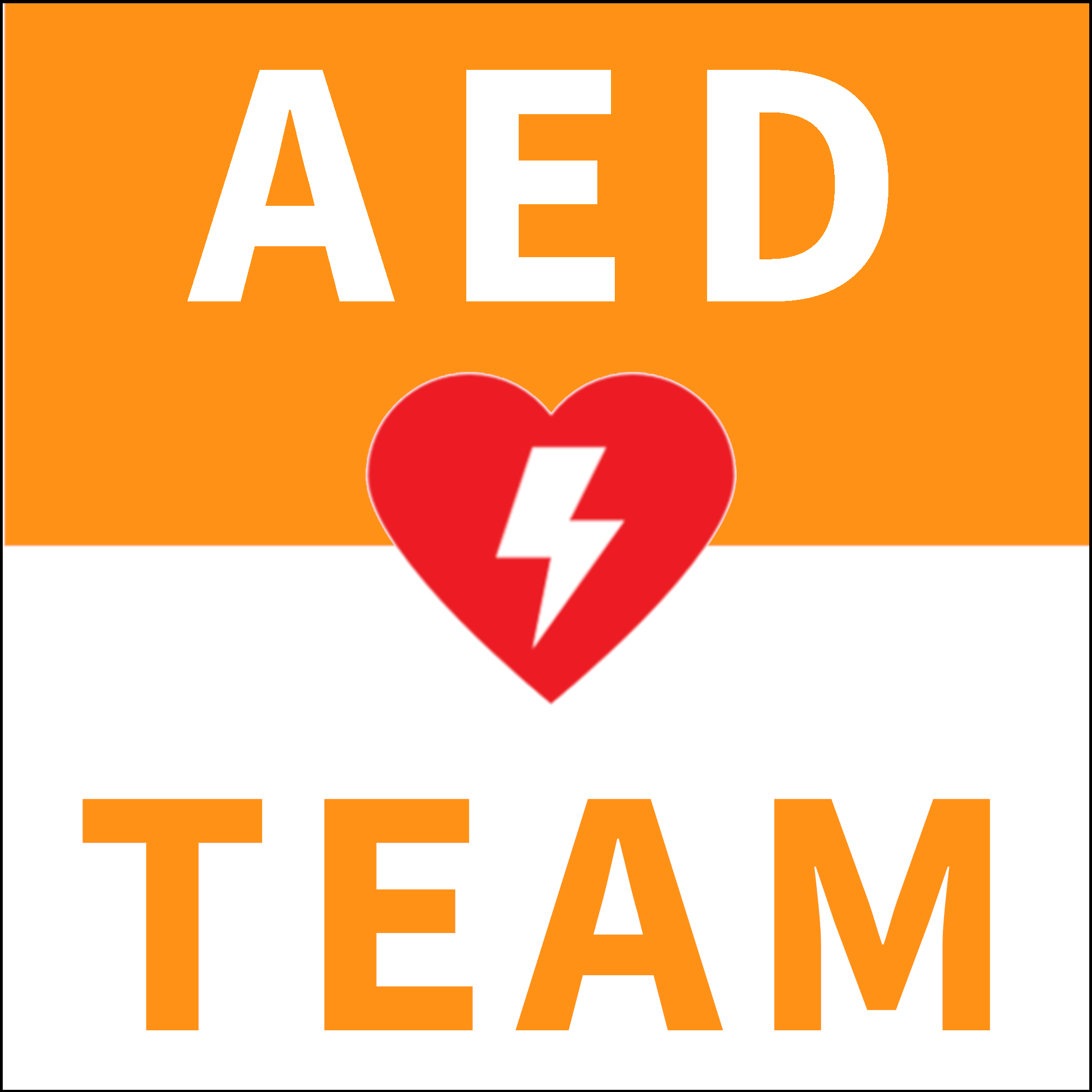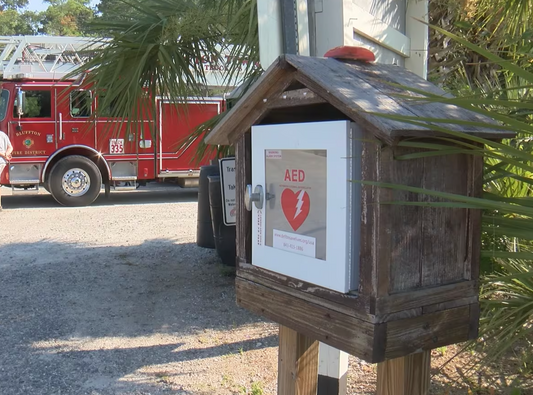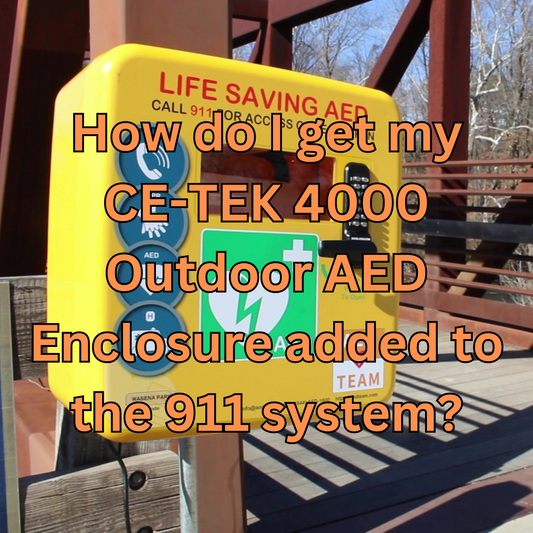A key to the success of Public Access to Defibrillation (PAD) programs is the strategic distribution of AEDs (Automated External Defibrillators) in the community. Leaders and advocates spend countless hours debating the placement of each AED, and for good reason: American Heart Association recommendations aim for defibrillation within three minutes of a cardiac arrest. Simply put, the placement of more AEDs in densely populated areas improves the likelihood that an AED will be nearby when someone has a cardiac arrest. When combined with high-quality CPR, early defibrillation significantly increases a victim's chance of survival.
This story takes us to the north shore of Plum Island, a small Massachusetts barrier island that is split between four governing municipalities. After a neighbor suffered a heart attack on the island, Peggy Poppe formed a resident committee to develop ways to improve the response to a similar emergency. With the help of the Plum Island Foundation, funding was raised through private donations for two defibrillators and outdoor AED enclosures to be placed on the island in the municipalities of Newbury and Newburyport.
The first AED and enclosure was installed in Plum Island Center in Newbury earlier this year. The placement features a robust outdoor AED cabinet which protects the lifesaving equipment from the harsh weather conditions typical of a New England island. Additionally, an emergency telephone was installed so that bystanders would be able to contact emergency dispatchers to report a problem and access the locked AED cabinet.
Shortly after the first AED was placed, the neighboring town of Newburyport which governs the section of island where the second AED was destined got cold feet. Officials who originally supported the AED placement at Plum Island Point backed away expressing concerns over theft, vandalism, delays in activating emergency response, and the AED being utilized by an untrained person.
Newburyport Fire Chief Christopher LeClaire told The Daily News that all of the city's fire apparatus were equipped with AEDs and, "We have enough defibrillators."
In public cardiac arrest, lives are often saved by bystanders, not EMS.
A petition organized by Poppe and her committee urged city officials to change their mind. The equipment had been purchased and was being delivered to the town at no cost to taxpayers. The forethought of utilizing a locked AED enclosure designed for harsh conditions would provide protection of the AED from tamper and theft. An emergency telephone was planned to be placed at the site of this AED at Plum Island Point which would alleviate concerns over 911 being activated in a timely manner. Lastly, numerous studies debunk the myth that an AED can only be used by trained responders.
Unfortunately, misinformation surrounding this issue is been creating unnecessary risk to lives of Plum Island residents and visitors. This situation provides an excellent opportunity to set the record straight and steer other communities with similar misconceptions to the right direction.
Why is this even an issue?
Cardiac arrest occurs when the heart stops pumping blood and can be caused by a number of issues. In many cases, cardiac arrest occurs suddenly and without warning including in people who are otherwise healthy. In the United States, over 350,000 people - approximately 14 people for every 10,000 - will experience out-of-hospital cardiac arrest each year.
Survival of a cardiac arrest victim is dependent on four immediate actions that must take place in the first minutes - recognition of the cardiac arrest, activation of the 911 system, bystander initiated CPR, and the application of an AED. Without these interventions, the person is unlikely to survive the cardiac arrest.
Why was Plum Island Point selected as a Public Access to Defibrillation (PAD) site?
Plum Island Point includes a public beach parking area adjacent to a charter boat marina and lighthouse. Beyond the small population that inhabits this area year round, this area is a popular destination in summer months for visitors to the island. Populated areas are key locations for PAD deployments.
With a population just shy of 10,000 people and with many more island visitors, Plum Island holds the same risk for out-of-hospital cardiac arrest as many communities around the world.
All of the fire and EMS units are equipped with an AED, why isn't that sufficient?
Consider the actions that must happen to get first responders to the scene of a cardiac arrest. Below is a typical timeline this event.
- 00:00 to 00:30 - A bystander has recognized that an emergency is occurring and activates the 911 system.
- 00:30 to 1:00 - An emergency dispatcher gathers information about the location of the emergency and condition of the victim. They then sends this information off to a dispatcher who will notify emergency responders. The call takes at least 30 seconds to pass information to responders.
-
01:00 to 06:00 - Police, firefighters, and EMS receive the call for assistance and respond. Response time is highly variable and is largely dependent on the community being served:
- Since on-duty police officers are usually on patrol in their vehicles, they are often the first units to arrive to an emergency call. Unfortunately, most US police agencies do not carry AEDs in their patrol cars and many police agencies do not respond to medical emergencies unless specifically requested.
- Most frontline fire apparatus are equipped with AED units. Fire agencies are more likely to be first responders to medical emergencies than police officers, however, some fire agencies also do not respond to medical calls in their communities unless requested by EMS. The National Fire Protection Association (NFPA) 1710 sets the standard for career fire department response time specifying that firefighters be able to turnout within 80 seconds and travel to a scene in less than 4 minutes. However, since 71% of all fire US agencies depend on volunteers, fire department response times can be considerably slower than NFPA recommendations.
- Emergency Medical Services agencies tend to cover larger areas than fire departments which usually results in slower response times than their firefighting counterparts. Volunteer EMS responders handle about 50% of the nation's call volume. Depending on the system, EMS responders may be housed in quarters, strategically positioned in vehicles, or may respond from their homes.
- There are many other variables to response time to consider (i.e. first responders are operating on another call which prolongs response time, or first responders are close-by when an emergency occurs which improves response time). It is impossible to set a definitive response time which would be even remotely valid for any US community. For the purposes of this article, we will use the optimistic NFPA response time of 5 minutes from receiving the call.
- 06:00 to 07:00 - First responders arrive on scene, gather the equipment they need, and make contact with the patient.
- 07:00 to 07:30 - Patient is evaluated, cardiac arrest is confirmed, AED is applied, analyzes the heart rhythm, and delivers a shock if indicated.
The Cardiac Arrest Registry to Enhance Survival (CARES) 2018 annual report shows the average arrival of first responders to be 6.4 minutes which is consistent with the above scenario.
Does bystander AED use improve survival?
Data from CARES demonstrates the impact bystander AED use has on cardiac arrest. When the first defibrillation was provided by a bystander, 47% of victims survived to hospital discharge compared to only 28% when defibrillation was performed by first responders or EMS. These statistics only include victims who presented with a shockable rhythm when the first defibrillator was connected.
Cardiac arrest victims may present initially with a shockable rhythm which will eventually deteriorate to a non-shockable rhythm if defibrillation is delayed. It is impossible to predict the number of cardiac arrest victims who would have survived if defibrillation was available sooner.
How is the concern for vandalism, theft, and tamper mitigated by the AED enclosure being used for this AED placement?
An all-weather, outdoor AED enclosure was selected for the Plum Island installations. These enclosures feature a combination push-button lock which 911 emergency telecommunicators provide to callers so that they may access emergency equipment. This ensures that the AED is protected against tamper and theft but remains available for use in an emergency.

Since AED units are electronic and use water soluble pads, they must be protected from dust, water, and cold temperatures. The selected enclosures safeguard the AED from inclement weather and use a heater to ensure that it remains operable.
Is there an issue with untrained rescuers using an AED?
Studies conducted on AED use frequently conclude that this lifesaving equipment can be effectively used by individuals who have never received training. AED units are required to have audible instructions and illustrations which guide the user and make it simple to operate.
It is also safe to apply an AED to someone that does not need defibrillation as the AED will only deliver a shock to a person presenting with a shockable heart rhythm.
Will the Plum Island Point AED delay activation of the 911 system?
Bystanders identifying a cardiac arrest will still need to call 911 immediately. If they are in close proximity to the AED, the emergency dispatcher will instruct them on how to retrieve the AED for use on the victim. Individuals that do not have the ability to call 911 from a mobile device will be able to do so from the emergency phone that is installed next to the AED at Plum Island Point. It would be very unlikely for this set-up to delay a call to 911.
There are several lessons to be taken from the Plum Island AED controversy. The community should embrace the initiatives of the resident committee for delivering a PAD program to the community at no expense to taxpayers.
Early intervention from bystanders drastically improves survivability from cardiac arrest. While defibrillation is important, it goes hand-in-hand with recognition of cardiac arrest, activating emergency response, and bystander initiated CPR. The locations of public AEDs should be widely publicized for easy recall through high visibility placement and recognizable signage. Officials should focus on ways they can improve public knowledge of these critical steps and strongly reconsider their stance of blocking efforts to make AEDs more accessible to bystanders.




